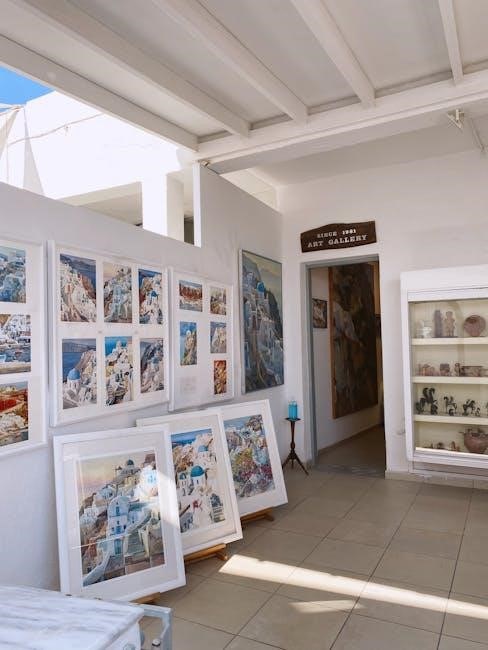“Pictures at an Exhibition” by Modest Mussorgsky is a beloved composition, arranged for trumpet by Patrick Roszell, Paul Lavender, and Bernard Dewagtere․ Available as free PDF downloads or paid sheet music, it offers a rich, complex piece for trumpet players to master, blending dynamic contrasts and intricate phrasing․
Overview of the Composition
“Pictures at an Exhibition” is a iconic work by Modest Mussorgsky, originally composed for piano․ It has been transcribed for various instruments, including the trumpet, offering a dynamic and challenging piece․ The composition is programmatic, depicting vivid imagery through music․ Arranged for trumpet by Patrick Roszell, Paul Lavender, and Bernard Dewagtere, it retains its orchestral depth while adapting to the trumpet’s unique voice․ Available as free PDF downloads or paid sheet music, it is a staple in trumpet repertoire, blending technical demands with expressive phrasing․ Its rich, programmatic nature makes it a compelling choice for performers seeking to showcase their versatility and artistry․
History and Significance of the Trumpet Version
The trumpet version of “Pictures at an Exhibition” emerged from arrangements by notable composers like Patrick Roszell, Paul Lavender, and Bernard Dewagtere․ These adaptations preserve the original’s essence while tailoring it for brass instrumentation․ The work’s significance lies in its adaptability, maintaining Mussorgsky’s emotional depth and complexity․ As a staple in trumpet repertoire, it challenges players with intricate phrasing and dynamic control․ Available as free PDF downloads and paid sheet music, it remains a testament to Mussorgsky’s enduring influence, offering a fresh perspective on a classical masterpiece through the trumpet’s voice, making it a cherished piece in modern trumpet performance․
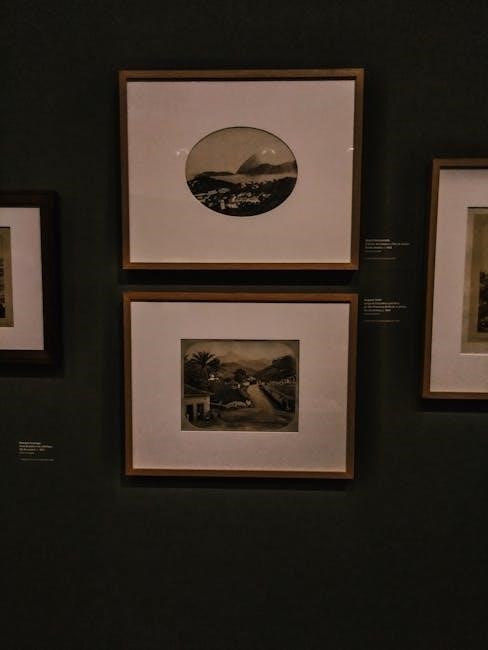
Structure and Movements of “Pictures at an Exhibition”
“Pictures at an Exhibition” consists of 11 movements, each inspired by Mussorgsky’s reflections on artwork․ Key movements include Promenade, Gnomus, and The Great Gate of Kiev․
Promenade
The Promenade is the opening movement of “Pictures at an Exhibition,” originally composed for piano․ It features a grand, marching theme that recurs throughout the piece, symbolizing the viewer’s journey through the exhibition․ For trumpet, this movement requires strong articulation and dynamic control to capture its majestic character․ The PDF sheet music for trumpet often includes detailed notation for tempo, phrasing, and articulation, ensuring players can accurately interpret Mussorgsky’s intent․ This movement sets the tone for the entire suite, showcasing the trumpet’s ability to convey both power and lyricism․ Proper breath control is essential for executing the sustained passages smoothly․
Gnomus
Gnomus is the second movement of “Pictures at an Exhibition,” known for its grotesque and whimsical character․ The music features irregular rhythms and sudden dynamic shifts, creating a sense of unpredictability․ For trumpet players, this movement demands precise articulation and a strong upper register to navigate its technical challenges․ The PDF sheet music often highlights complex phrasing and nuance, requiring careful study․ Gnomus showcases Mussorgsky’s ability to evoke vivid imagery through music, and trumpet arrangements must balance humor with intensity․ Mastering this piece is a testament to a player’s technical and expressive abilities, making it a rewarding yet demanding part of the suite․
Interludium
The Interludium serves as a lyrical and somber bridge between movements, showcasing Mussorgsky’s ability to evoke introspective emotions․ Originally written for piano, trumpet arrangements maintain the piece’s melancholic essence while adapting its technical demands․ The music flows with a sense of longing, requiring nuanced phrasing and control․ Trumpet players must balance delicate dynamics with expressive articulation to capture the Interludium’s emotional depth․ Sheet music arrangements, such as those by Bernard Dewagtere, often emphasize the importance of maintaining a legato tone․ This movement highlights Mussorgsky’s mastery of contrast, preparing listeners for the dramatic shifts ahead in the suite․
Bydło
Bydło (Cattle) is a heavy, plodding movement depicting the slow, laborious march of oxen․ Trumpet arrangements emphasize the low register and intense dynamics, capturing the raw energy of Mussorgsky’s original piano work․ The music demands precise articulation and control, particularly in the lowest notes, to convey the weighty, relentless rhythm․ Players must focus on breath control to sustain the long, ominous phrases․ Arrangements by Patrick Roszell and Paul Lavender highlight the dramatic contrasts, ensuring the trumpet maintains the dark, brooding character of the piece․ This movement challenges trumpet players to balance power with subtlety, preserving the composition’s emotional depth and intensity․
Ballet of the Unhatched Chickens
Ballet of the Unhatched Chickens is a lively, whimsical movement that captures the playful energy of chicks emerging from eggs․ Trumpet arrangements, such as those by Patrick Roszell and Bernard Dewagtere, highlight the piece’s rhythmic complexity and humor․ The music requires precise articulation and phrasing to convey the lighthearted, dancing quality․ Players must navigate quick tempo changes and dynamic contrasts, ensuring clarity in the upper register․ This movement showcases the trumpet’s agility and tonal versatility, offering a delightful contrast to the darker, more introspective sections of the suite․ Its charm lies in its ability to evoke imagery of sprightly, unborn chicks, making it a crowd favorite in performances of Pictures at an Exhibition․
Samuel Goldenberg and Schmuÿle
This movement contrasts two distinct characters: the arrogant Samuel Goldenberg and the timid Schmuÿle․ The trumpet arrangement captures their dialogue, with Samuel’s bold, declarative phrases and Schmuÿle’s hesitant, nasal-like responses․ Dynamics and phrasing are crucial, as the music shifts between grandeur and subtlety․ Trumpet players must navigate these contrasts seamlessly, maintaining a steady tempo to preserve the dialogue-like structure․ The sheet music, available in PDF formats, highlights the intricate interplay between the two themes, requiring precise articulation and tonal control․ This piece is a showcase for the trumpet’s expressive range, blending humor and drama in Mussorgsky’s vivid portrayal of these two characters․
Limoges, the Market
“Limoges, the Market” is a vibrant movement depicting a bustling French market scene․ The trumpet arrangement captures the lively atmosphere with rapid, intricate passages and dynamic contrasts․ Players must master quick articulations and precise tempo control to convey the movement’s energy․ The sheet music, available in PDF formats, emphasizes the importance of maintaining a steady rhythm while navigating the piece’s technical demands․ This movement showcases the trumpet’s agility and clarity, making it a thrilling challenge for performers․ The arrangement by Patrick Roszell and others highlights the composition’s original charm, ensuring a captivating experience for both players and audiences․
Catacombae
“Catacombae” is a somber, eerie movement that evokes the dark, mysterious atmosphere of ancient catacombs․ The trumpet arrangement captures the haunting beauty of Mussorgsky’s original composition, with deep, resonant tones and slow, deliberate phrasing․ Sheet music for this movement is widely available as PDF downloads, including arrangements by Bernard Dewagtere and Patrick Roszell․ Trumpet players must focus on maintaining a steady, mournful melody while navigating subtle dynamic shifts․ The movement’s mysterious quality requires precise control of articulation and tone, making it a compelling yet challenging piece for performers․ Its dramatic contrast with other movements adds depth to the overall suite, showcasing the trumpet’s expressive range․
Cum Mortuis in Lingua Mortua
“Cum Mortuis in Lingua Mortua” is a solemn, reflective movement that follows the dramatic intensity of “Catacombae․” The trumpet arrangement maintains the mournful, elegiac quality of Mussorgsky’s original, with long, legato phrases and subtle dynamic shifts․ Sheet music for this movement is available in various PDF arrangements, including those by Bernard Dewagtere and Patrick Roszell․ Trumpet players must emphasize tonal purity and control, as the piece relies heavily on lyrical expression․ The movement’s slow tempo and haunting melodies require precise phrasing and emotional depth, making it a poignant and challenging addition to the suite․ Its introspective nature contrasts beautifully with the preceding movements, showcasing the trumpet’s ability to convey profound sadness and contemplation․
The Hut on Fowl’s Legs
“The Hut on Fowl’s Legs” is a quirky, rhythmic movement that contrasts sharply with the preceding solemnity․ The trumpet arrangement captures the playful, folk-inspired character of Mussorgsky’s original, with staccato articulations and lively phrasing․ Sheet music for this movement is available in PDF formats, including arrangements by Patrick Roszell and Bernard Dewagtere․ Trumpet players must master sharp rhythmic accuracy and crisp articulation to convey the movement’s humor and energy․ The piece’s irregular meter and sudden dynamic shifts present technical challenges, while its whimsical melody offers opportunities for expressive interpretation․ This movement is a delightful showcase of the trumpet’s agility and tonal clarity, blending wit and musicality seamlessly․
The Great Gate of Kiev
“The Great Gate of Kiev” is the majestic finale of “Pictures at an Exhibition,” showcasing triumphant brilliance․ The trumpet arrangement, particularly in versions by Patrick Roszell and Paul Lavender, emphasizes powerful fanfares and soaring melodies․ Sheet music for this movement is widely available in PDF format, offering detailed notation for dynamics, phrasing, and articulation․ Trumpet players must navigate dramatic contrasts, from soft, reverent passages to climactic fortissimo outbursts․ The piece demands precise control of intonation and breath support, especially in its grand crescendos․ This movement is a thrilling conclusion, highlighting the trumpet’s ability to convey both majesty and emotional depth, leaving a lasting impression on listeners․ The arrangement remains faithful to Mussorgsky’s original vision while adapting beautifully for trumpet performance․

Trumpet-Specific Arrangements and Interpretations
Arrangements by Patrick Roszell, Paul Lavender, and Bernard Dewagtere adapt Mussorgsky’s masterpiece for trumpet, emphasizing dynamics, tempo, and articulation while preserving the original’s grandeur and complexity․
Arrangement by Patrick Roszell
Patrick Roszell’s arrangement of “Pictures at an Exhibition” for trumpet is a digital download, perfect for educational use․ It features the 1st B-flat Trumpet part, arranged for concert band, and is available as a PDF․ This version is ideal for students and educators, offering a balanced blend of technical challenges and musicality․ Roszell’s adaptation maintains the original composition’s grandeur while tailoring it for trumpet performance․ The sheet music is distributed by Hal Leonard and J․W․ Pepper, ensuring high-quality notation․ This arrangement is a fantastic resource for trumpet players seeking to master Mussorgsky’s iconic work in a concert band setting․
Arrangement by Paul Lavender

Paul Lavender’s arrangement of “Pictures at an Exhibition” for trumpet is a popular choice among musicians, offering a rich and dynamic interpretation․ It is available as a digital download in PDF and Scorch formats, making it accessible for modern players․ The arrangement is scored for concert band and includes solos, providing a challenging yet rewarding experience․ Lavender’s version is known for its faithfulness to Mussorgsky’s original work while adapting it for trumpet performance․ The sheet music is distributed by major music publishers and is suitable for both high school and college-level ensembles․ This arrangement highlights the trumpet’s ability to convey the emotional depth and complexity of the piece․
Arrangement by Bernard Dewagtere
Bernard Dewagtere’s arrangement of “Pictures at an Exhibition” for trumpet offers a unique interpretation of Mussorgsky’s original composition․ It is scored for trumpet in C and piano, making it accessible for solo performers․ The arrangement is available as a free PDF download on platforms like 8notes․com, providing musicians with an opportunity to explore the piece without cost․ Dewagtere’s version maintains the Romantic era’s emotional depth while adapting the work for trumpet performance․ The sheet music includes detailed notation for tempo, dynamics, and articulation, ensuring a faithful rendition of the original composition․ This arrangement is ideal for advanced players seeking to showcase their technical and expressive abilities․
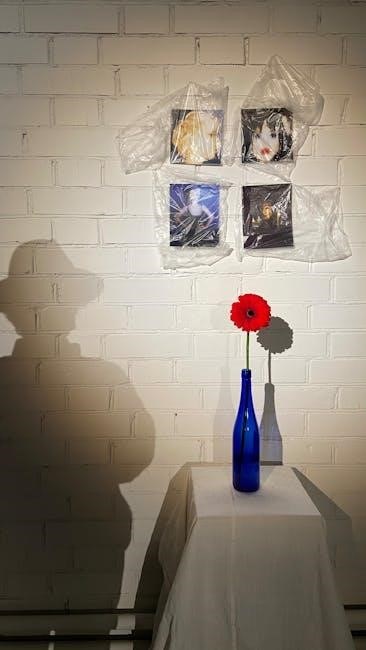
Sources for Trumpet Sheet Music
Free Pictures at an Exhibition PDF downloads are available on platforms like 8notes․com and central sheet music․ Paid options, including arrangements by Paul Lavender, can be found on Musicnotes․ Bernard Dewagtere’s version for trumpet in C and piano is also accessible online, offering a rich resource for musicians seeking high-quality sheet music․
Free PDF Downloads
Free Pictures at an Exhibition PDF downloads are available on platforms like 8notes․com and central sheet music․ These resources offer arrangements for Bb trumpet, including the iconic “Promenade” movement․ Scores often include detailed notation for tempo, dynamics, and articulation, making them ideal for practice and study․ Websites like MuseScore also provide user-contributed arrangements, such as those by Bernard Dewagtere and Patrick Roszell․ While free options are convenient, they may lack the polish of paid editions․ Still, they remain a valuable starting point for trumpet players exploring Mussorgsky’s masterpiece․
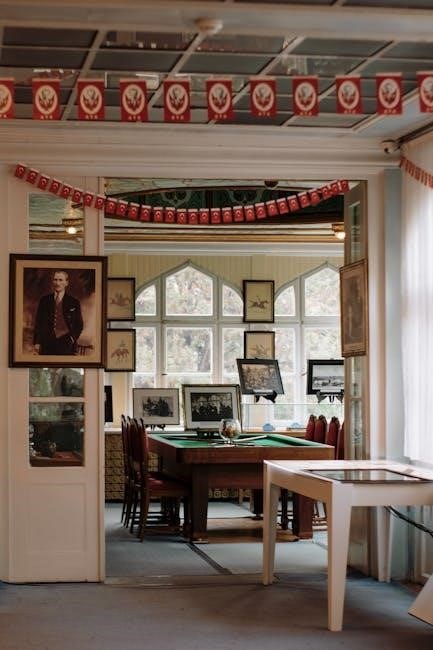
Paid Sheet Music Options
Paid sheet music options for Pictures at an Exhibition offer high-quality, professionally arranged scores․ Arrangements by Patrick Roszell and Paul Lavender are available for purchase, ensuring accuracy and clarity․ These editions often include detailed tempo markings, dynamics, and articulation specific to the trumpet․ Platforms like Musicnotes and Sheet Music Plus provide digital downloads, while publishers like Hal Leonard offer printed copies․ Paid versions are ideal for serious players seeking precise notation and reliable arrangements․ They often include additional features, such as performance notes and historical context, making them a valuable investment for musicians aiming to master this iconic piece․
Recommended Editions for Trumpet
For trumpet players, Patrick Roszell’s and Paul Lavender’s arrangements are highly recommended․ Roszell’s version, available as a digital download, offers a well-balanced adaptation with clear notation․ Lavender’s arrangement, part of a concert band series, provides a rich, orchestral feel․ Both editions are praised for their clarity and playability, making them suitable for advanced players․ Additionally, Bernard Dewagtere’s arrangement for Trumpet in C and Piano is ideal for those seeking a chamber music setting․ These editions are available on platforms like Musicnotes and Sheet Music Plus, ensuring access to high-quality sheet music tailored for trumpet performance․

Performance Tips for Trumpet Players
Mastering Pictures at an Exhibition requires precise articulation, dynamic control, and breath management․ Focus on phrasing and tempo accuracy to capture the piece’s dramatic contrasts and nuances effectively․
Challenges in Playing “Pictures at an Exhibition”
Performing “Pictures at an Exhibition” on trumpet presents significant technical and musical challenges․ The piece demands precise articulation, dynamic control, and breath management due to its complex phrasing and dramatic contrasts․ Trumpet players must navigate abrupt tempo changes, intricate fingerings, and extended range requirements, particularly in the higher registers․ Additionally, maintaining consistent tone quality across the instrument’s full range is essential․ The arrangement by Bernard Dewagtere, for instance, highlights the need for clarity and precision in fast passages․ Players must also balance technical accuracy with expressive interpretation to convey the emotional depth of Mussorgsky’s original composition․ Mastery requires dedicated practice and a deep understanding of the score․
Dynamic and Articulation Considerations
Mastering the dynamics and articulation in “Pictures at an Exhibition” is crucial for a compelling trumpet performance․ The piece requires stark contrasts, from the subtle pianissimo passages in “Promenade” to the explosive fortissimo climaxes in “The Great Gate of Kiev․” Articulation varies significantly, with crisp staccato notes in “Gnomus” and legato phrasing in “Bydło․” Trumpet players must carefully balance these elements while maintaining a consistent tone․ Arrangements by Patrick Roszell and Paul Lavender emphasize precise dynamic control and nuanced articulation, ensuring the music’s dramatic intent is preserved․ Attention to these details enhances the overall interpretation and audience connection, making the performance both technically impressive and emotionally resonant․
Tempo and Phrasing Guidelines
Accurate tempo and phrasing are essential for a faithful rendition of “Pictures at an Exhibition” on the trumpet․ The composition’s movements vary significantly, from the stately Promenade to the frenetic Gnomus․ Trumpet players must maintain a steady tempo, particularly in the Promenade, where a moderate, walking pace sets the tone․ In contrast, Limoges, the Market demands a lively, brisk tempo, while Cum Mortuis in Lingua Mortua requires a somber, slower pace․ Rubato should be applied judiciously, especially in expressive sections like The Great Gate of Kiev․ Arrangements by Patrick Roszell and Paul Lavender provide clear phrasing guides, ensuring the music’s dramatic intent shines through while maintaining rhythmic precision and musicality․

Community and Resources
Online forums and communities like TrumpetMaster or Reddit’s trumpet subreddit offer valuable insights and discussions about “Pictures at an Exhibition” for trumpet․ Workshops and masterclasses, often led by renowned trumpet players, provide hands-on learning opportunities․ Recordings by virtuosos like Maurice André or Sergei Nakariakov serve as inspirational references, showcasing exceptional interpretations of the piece․ These resources foster a supportive environment for trumpet enthusiasts to share knowledge, refine techniques, and gain inspiration from fellow musicians and professional performances․ Engaging with these communities enhances both learning and performance excellence for “Pictures at an Exhibition․”
Online Forums and Discussions
Online forums like TrumpetMaster and Reddit’s r/trumpet host vibrant discussions about “Pictures at an Exhibition” for trumpet․ Players share tips on mastering challenging movements, such as “The Great Gate of Kiev” and “Bydło․” These platforms also offer reviews of different sheet music arrangements, including those by Patrick Roszell and Bernard Dewagtere․ Musicians often exchange advice on interpreting dynamics and articulations, while experienced educators provide insights into teaching the piece to students․ Additionally, links to free PDF downloads and recommendations for paid sheet music are frequently shared, making these forums invaluable resources for trumpet enthusiasts seeking to refine their performance of Mussorgsky’s iconic work․
Workshops and Masterclasses
Workshops and masterclasses dedicated to “Pictures at an Exhibition” for trumpet offer in-depth exploration of the piece․ Experts guide participants through challenging sections, focusing on dynamic control, articulation, and phrasing․ These sessions often cover arrangements by Bernard Dewagtere and Patrick Roszell, emphasizing techniques specific to trumpet performance․ Hands-on instruction and collaborative learning environments help musicians refine their interpretation․ Many workshops include live demonstrations and Q&A sessions, providing valuable insights․ Additionally, some events offer access to exclusive resources, including free PDF downloads of practice materials․ These gatherings are indispensable for trumpet players aiming to master Mussorgsky’s iconic composition․
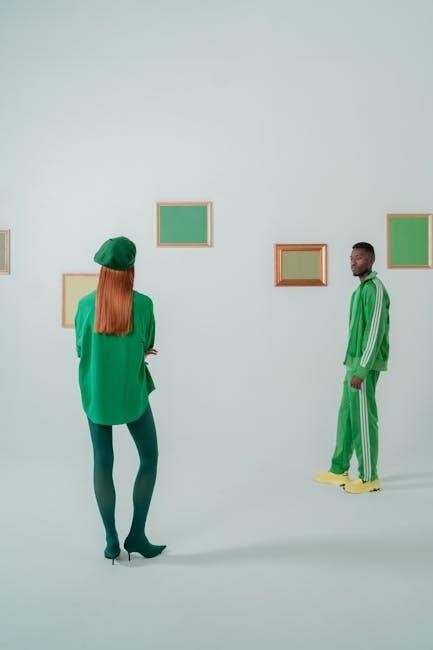
Recordings and Performances
Recordings of “Pictures at an Exhibition” for trumpet highlight the piece’s emotional depth and technical demands․ Performances often feature arrangements by Patrick Roszell, Paul Lavender, and Bernard Dewagtere, showcasing the trumpet’s ability to convey Mussorgsky’s vivid imagery․ These recordings demonstrate dynamic contrasts, intricate phrasing, and the instrument’s expressive range․ They serve as invaluable references for trumpet players preparing the piece, offering insights into interpretation and technique․ Additionally, live performances of the work are celebrated for their energy and precision, inspiring musicians to explore the composition’s complexities․ Listening to these recordings can enhance understanding and motivation for aspiring trumpet players․
“Pictures at an Exhibition” for trumpet offers a rich and rewarding experience, with accessible PDF sheet music and inspiring performances available online․ Embrace the challenge and enjoy the journey of mastering this iconic piece․
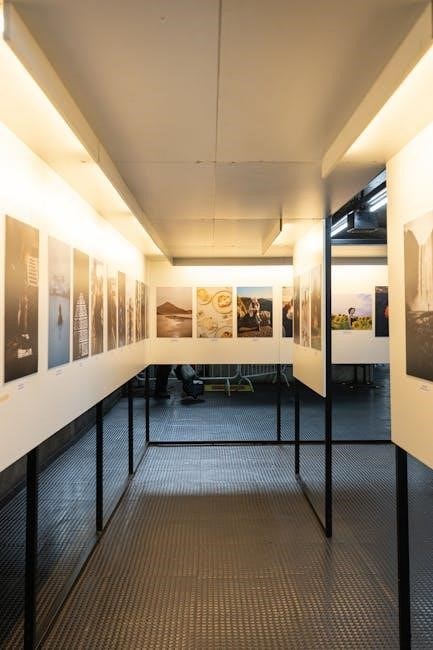
Final Thoughts on Playing “Pictures at an Exhibition” for Trumpet
Mastering “Pictures at an Exhibition” on trumpet requires dedication, but the rewards are immense․ With free PDF downloads and expert arrangements by Patrick Roszell and Paul Lavender, musicians can access high-quality sheet music․ The piece demands precise articulation and dynamic control, making it a challenging yet fulfilling endeavor․ Aspiring trumpeters should explore both solo and ensemble versions, leveraging online resources and masterclasses for guidance․ Embrace the musical journey, and let Mussorgsky’s masterpiece resonate through your performances, inspiring both personal growth and audience admiration․
Encouragement for Aspiring Trumpet Players
Embarking on “Pictures at an Exhibition” is a thrilling journey for trumpet players․ With free PDF downloads and expert arrangements like those by Bernard Dewagtere, access to quality sheet music is effortless․ This iconic piece offers a chance to refine technique and expressivity․ Don’t hesitate to explore its complexities—each movement is a stepping stone to mastery․ Whether through solo practice or ensemble collaboration, embrace the challenge and enjoy the artistic growth․ Remember, every note brings you closer to sharing Mussorgsky’s timeless masterpiece with the world․ Let passion guide your practice, and let your trumpet voice shine through this legendary composition․

